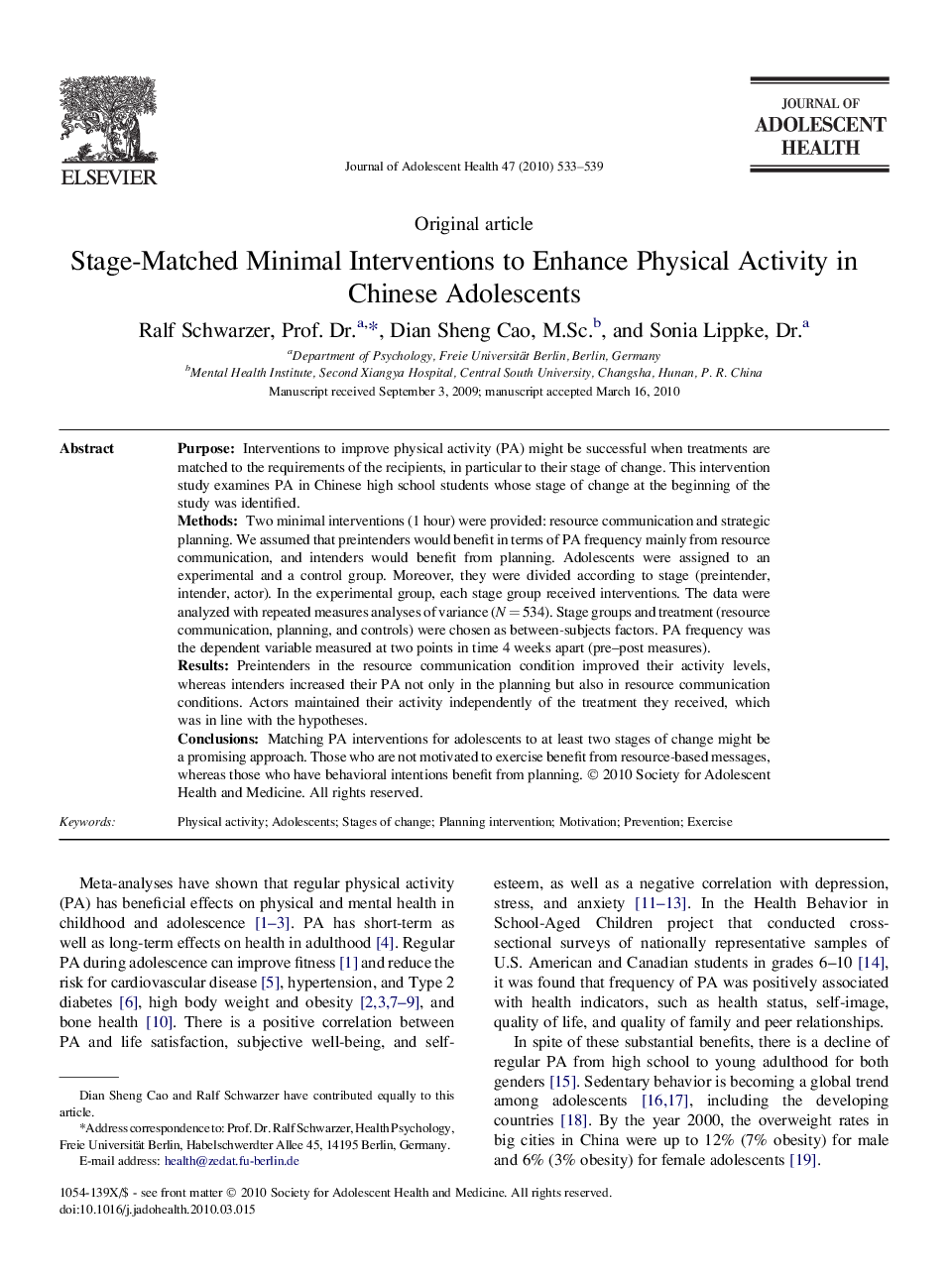| Article ID | Journal | Published Year | Pages | File Type |
|---|---|---|---|---|
| 1080357 | Journal of Adolescent Health | 2010 | 7 Pages |
PurposeInterventions to improve physical activity (PA) might be successful when treatments are matched to the requirements of the recipients, in particular to their stage of change. This intervention study examines PA in Chinese high school students whose stage of change at the beginning of the study was identified.MethodsTwo minimal interventions (1 hour) were provided: resource communication and strategic planning. We assumed that preintenders would benefit in terms of PA frequency mainly from resource communication, and intenders would benefit from planning. Adolescents were assigned to an experimental and a control group. Moreover, they were divided according to stage (preintender, intender, actor). In the experimental group, each stage group received interventions. The data were analyzed with repeated measures analyses of variance (N = 534). Stage groups and treatment (resource communication, planning, and controls) were chosen as between-subjects factors. PA frequency was the dependent variable measured at two points in time 4 weeks apart (pre–post measures).ResultsPreintenders in the resource communication condition improved their activity levels, whereas intenders increased their PA not only in the planning but also in resource communication conditions. Actors maintained their activity independently of the treatment they received, which was in line with the hypotheses.ConclusionsMatching PA interventions for adolescents to at least two stages of change might be a promising approach. Those who are not motivated to exercise benefit from resource-based messages, whereas those who have behavioral intentions benefit from planning.
